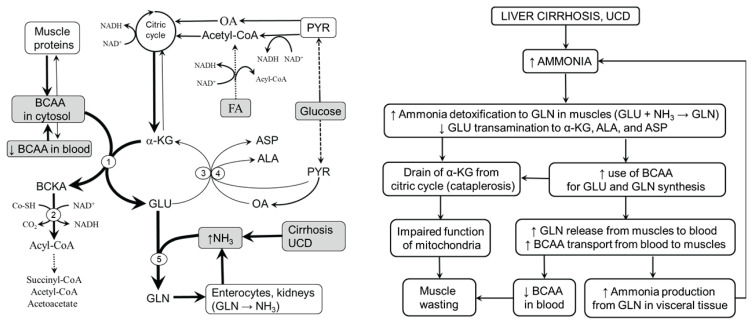Fig. 2.
Role of skeletal muscle in the pathogenesis of decreased blood plasma BCAA concentrations in hyperammonaemic states. Under hyperammonaemic conditions, such as liver cirrhosis and UCD, ammonia detoxification to GLN in muscles is activated. The needs of GLU for the GLN synthetase reaction are covered by GLU synthesis from BCAA and α-KG. The results are depletion of BCAAs, diversion of GLU from ALT and AST reactions to GLN synthesis, and the drainage of α-KG from the citric acid cycle. Most of GLN produced in muscles is released into the blood via exchange with BCAAs, resulting in a BCAA decrease in blood plasma. Catabolism of GLN in visceral tissues results in increased ammonia production, which, when its detoxification to urea in the liver is insufficient, is detoxified to GLN in reactions consuming BCAA and α-KG in muscles again. 1, BCAAT; 2, BCKAD; 3, ALT; 4, AST; 5, GLN synthetase. ALA, alanine; ASP, aspartic acid; FA, fatty acids; GLU, glutamic acid; GLN, glutamine; OA, oxaloacetate; PYR, pyruvate.

